Last week I had the incredible experience of traveling to Tana Toraja on the island of Sulaewsi. The trip had originally been organized for a small group of High School students, but no students signed up for it, so Jen and I decided to pack our backpacks and go with two of her friends from Jakarta. The primary goal of the trip was to find (and retrieve) the natural pigments that they use in their traditional woodcarvings, but what we discovered was so much more than just colors. Instead we got to experience a vibrant culture immersed in extreme tradition.
Tana Toraja is a regency of in the mountainous region of south Sulawesi. Sulaewsi is a very big island (the 11th largest in the world), and with airports at only the very north and very south, traveling around can take a lot of time. It took us 9 hours to get to Toraja from the Makassar airport on the bumpiest car ride of my life, but it was worth it. Looking out the window on that car ride felt like going back in time.
The first thing that sticks out about Torajan culture are the beautifully ornate boat-shaped houses. The exterior walls are adorned with buffalo horns and jaws, signifying the wealth of the family.
To the people of Toraja, the tongkonan is not just a house or a structure– it’s a symbol of family identity and represents all their ancestors that came before them. Ancestral descent in Toraja is traced bilaterally through both the male and female line, so people belong to more than one house and can identify their families from these structures, as well as their social status.
I loved all of the intricate carvings on the exterior of each tongkonan. There are many animal motifs of buffalo, cock, snakes, geckos, etc, as well as plants and other representations of natural elements. One thing that I learned was that each of the houses has two cocks facing one another (pictured above), symbolizing the Torajan way of navigating any dispute: through cock fighting. The example given to me was if someone told me “You are the son of your father!” and I said “No I’m not… I’m the son of my mother!” then the argument could only be resolved through a cock fight. The cock therefore represents true justice and fairness.
Our driver/guide on this trip was a man named Sam, and he was the best at making sure we got to see all that Toraja had to offer. One of the first places he took us was to his village to see a cock fight and local gambling. This is very common in Bali, but are exclusively for men only. The cock fight was the first of several instances of experiencing death first-hand in Toraja.
(insert ominous music)
For the Toraja people, life revolves around death. The funeral is the greatest celebration of a persons life, and is an occasion where everyone in the family and village participates. They are extremely Christian, yet still hold onto animist traditions– meaning certain animals are gateways to God, and with their sacrifice they are allowed entry to Puya (or “land of the souls”). During their lives, the Toraja people work extremely hard to make money. But unlike other societies, they do not save it to give themselves a good life, rather they save for a good send off in death. How expensive a persons funeral is, is what ranks their family social status.
I had the strange and rare opportunity to attend a funeral of someone belonging to a high cast in a Toraja village. We arrived around 3 hours early to the ceremony, which was enough time to ask a thousand questions. I didn’t know what to expect, exactly. I knew that in order for a funeral to take place, at least one buffalo had to be sacrificed in public. But what makes for an extravagant funeral in Toraja?
image of the first buffalo sacrificed: always the one with the longest horns
I will never forget the sour stench of the funeral site. The ground was covered in puddles of blood from the previous days sacrifice, which apparently was pigs. We met the most expensive buffalo that was sentenced to be sacrificed, a beautiful, 20-year-old spotted albino. It’s caretaker was feeding it his last meal. We asked the caretaker if he was sad, but he didn’t need to answer– it was apparent that he had a deep connection to this animal and had been caring for it for years. This buffalo was worth an astonishing $72,000 USD.
Wait—What?! That is a massive amount to pay for just a single buffalo. The craziest part is that, because this person was part of such a high social status, his family had 62 buffaloes sacrificed at his funeral. With each buffalo costing upwards of $15,000 USD, that is precisely what makes an extravagant funeral.
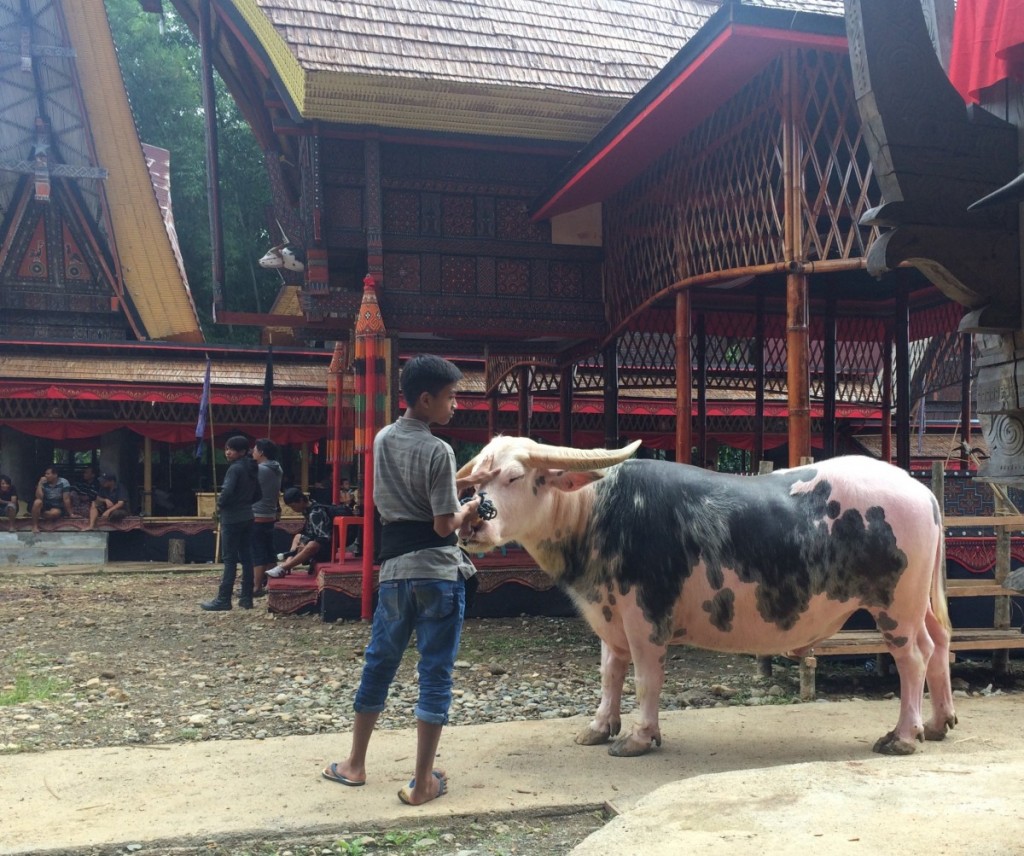
image of the $72k buffalo and his caretaker
Funerals are often held weeks, months, or even years after the death of a person to give the family of the deceased time to raise enough money for buffaloes. The body is not buried (and the person is technically not dead) until the funds have been raised. In fact, the dead body stays in the home for this time… yes that means sharing a bed with your dead uncle! Many people go into debt in order to hold a funeral ceremony and it is not uncommon for a young man, afraid of being burdened by debt, to postpone or cancel his marriage if a grandparent of the girl he loves is old enough to die soon. Yikes!
We waited for several hours for the buffalo to get numbered and paid off. It’s still unclear how these families can afford that massive amount for a single family member, but from my understanding, it’s the only important thing because it’s their ticket to the afterlife. I mean, life is temporary, but the afterlife? Not so much.
I’ll leave the sacrificial ceremony to zero description. All I can say it was equal parts thrilling, horrifying, fascinating.
image of tau-tau
BURIAL SITES
Torajans have a few different methods of burying their dead. The most traditional way is to place the body in a coffin to be set in a cave or hung on a cliff. The coffin contains possessions that the deceased will need in the afterlife. Once the dead decomposes to just bone, the skull is placed outside of the coffin, to watch over the rest of the body.
The wealthy are often buried in a stone grave carved out of a rocky cliff. The grave is usually very expensive, some more expensive than the funeral itself. Many wealthy families are buried together in caves. A wooden life-sized effigy representing the deceased family, called tau-tau, is carved outside of the cave, looking out over the land. These creepy effigies make it seem like the dead families are watching you for all eternity.
We visited several of these cliff/cave burial sites, but the most disturbing place for the dead was devoted to babies. These coffins for babies are found in one particular tree, carved out in the trunk. When we arrived at this site, there was a 93 y/o woman, sitting behind a small wooden ticket counter. She told us the story (which was translated to me) of a deaf and mute woman who traveled to Toraja because she was following the “sounds” of babies crying. The cries led her to a tree, which she then deemed as a sacred burial site. Once they started praying towards the tree, the crying stopped, and suddenly the woman could hear and speak again.
Remember how I mentioned that the corpse may have to stay in the home until the family can pay for the funeral? When this happens, the family raises a white flag outside of the home. Our awesome driver Sam was determined to find us one, and after knocking on several doors, we did. The obscured photo above is Nana, who passed last July. We sat and had tea with her and her family. Like I said, the person isn’t technically dead until the proper burial, so they “feed” her, bathe her, talk to her, etc, without any fear or regard to absurdity. This is what I love about learning about other cultures; what is taboo to one may be embraced in another.
image of cliff burial site
One last thing that I had read about, but didn’t get much information on, was the use of black magic in Toraja. Apparently, “some remote areas still allegedly practice an even older, even weirder ceremony in which the dead are said to literally walk on their own. One thing common to all of the funeral ceremonies and rites of the Toraja is that in order for the spirit to be able to pass into the afterlife certain conditions must be met. First, all of the relatives and extended family of the deceased must be present for the funeral. Second, the deceased must be interred in the village of their birth. If these conditions are not met, it is said that the soul will forever linger around its body in a state of limbo, and unable to journey to Puya until they are, a belief that in the old days of stark remoteness dissuaded most from travelling too far from their village lest they be trapped and tethered to their dead body in some faraway place. This all posed some challenges in the past, as before the 20th century and subsequent colonization by the Dutch, the Toraja lived in remote, autonomous villages that were completely isolated from each other and the outside world, with no roads connecting them. When a villager died far from his birthplace, it was difficult for family to retrieve the body and carry it back through rugged, mountainous terrain to its place of origin. The solution to this problem was unique to say the least.
In order to make sure the corpse was able to be returned to their village of birth and spare the family the hardship of carrying it themselves, special shamans were sought out who allegedly had the power to temporarily bring the dead back to life. The particular brand of black magic used by the shamans only brought the dead back to life in the most rudimentary sense. These walking corpses were said to be largely unaware of their surroundings and nonresponsive, expressionless, and uncoordinated, only able to perform the most basic tasks such as walking. Upon being brought back to life, the walking corpse was said to shamble stiffly and robotically towards its village of birth, often guided by the shaman or a procession of family members, but sometimes on its own. Special runners would move out ahead of the group to warn others that a walking corpse was passing through. The walk back to the village was meant to be a completely silent, somber affair, and it is said that if anyone addressed the corpse directly by name it would immediately collapse and lose whatever power animates it. It is not clear whether a bullet to the head would accomplish the same effect, but I must assume it would” (source).
image of coffins stacked in cave burial site


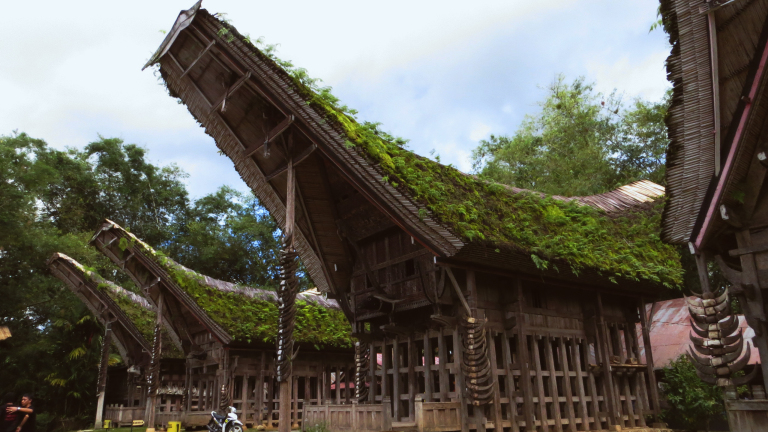
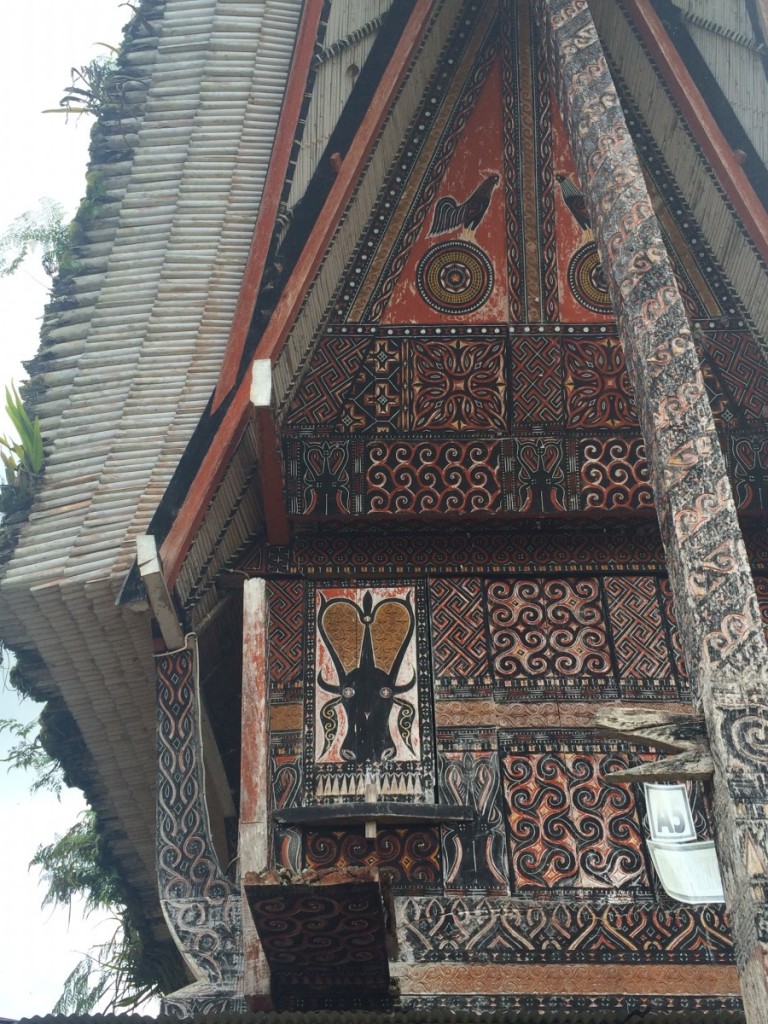
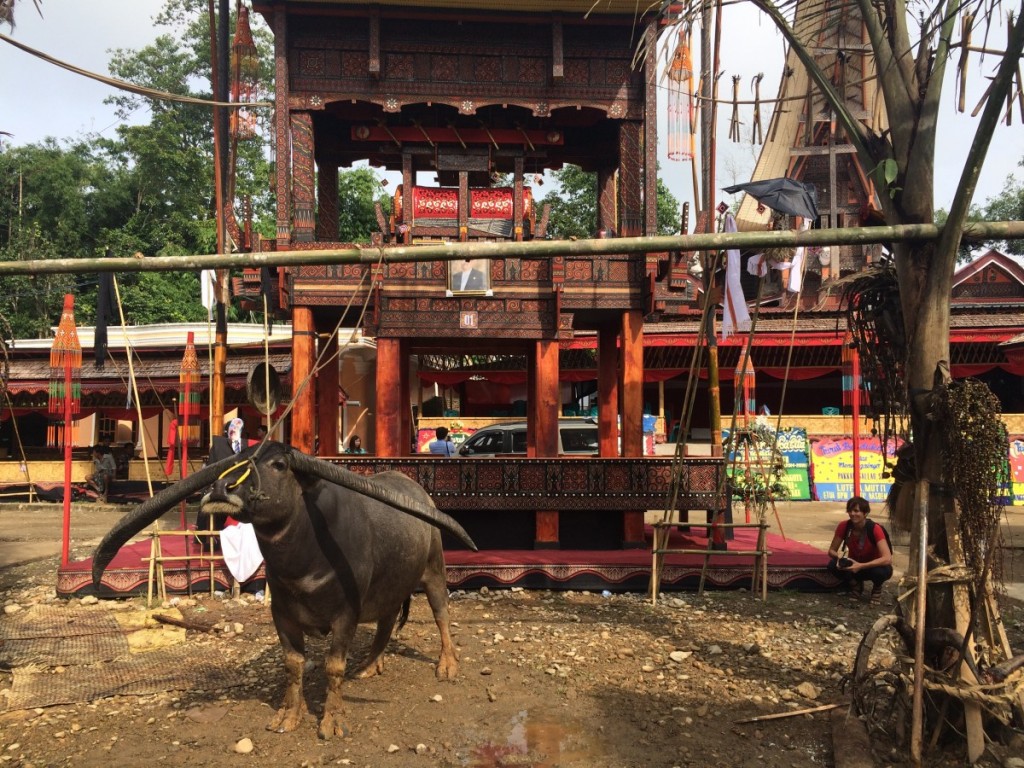

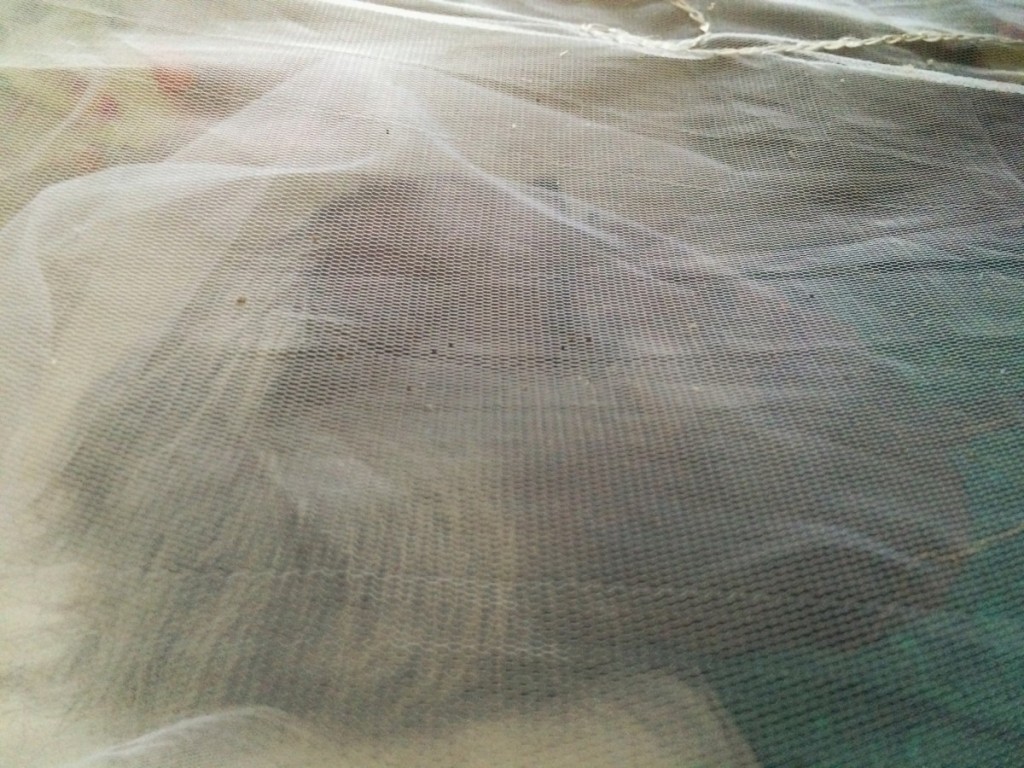


Be First to Comment